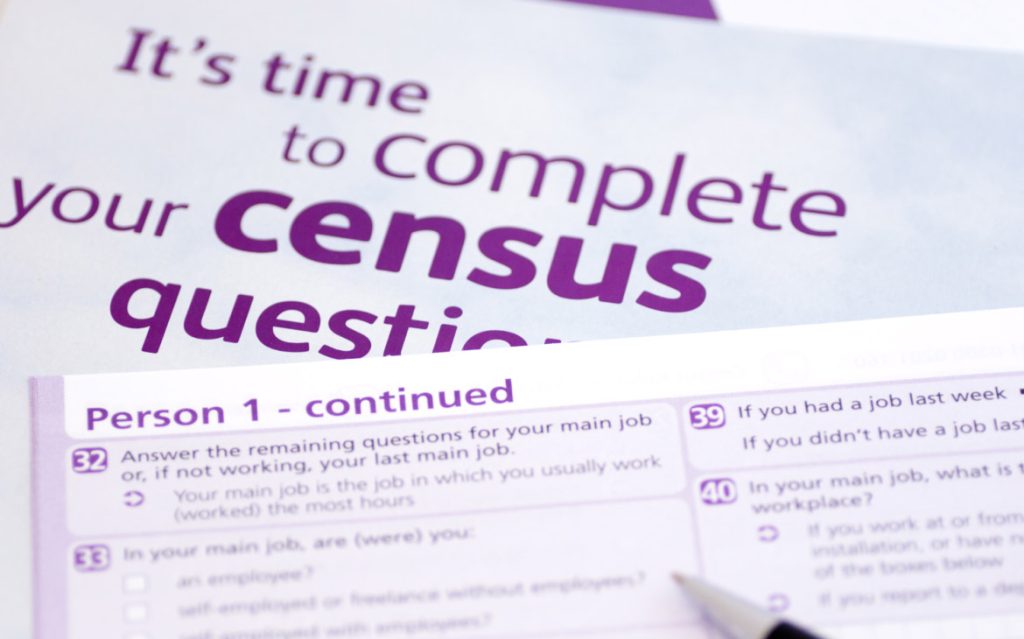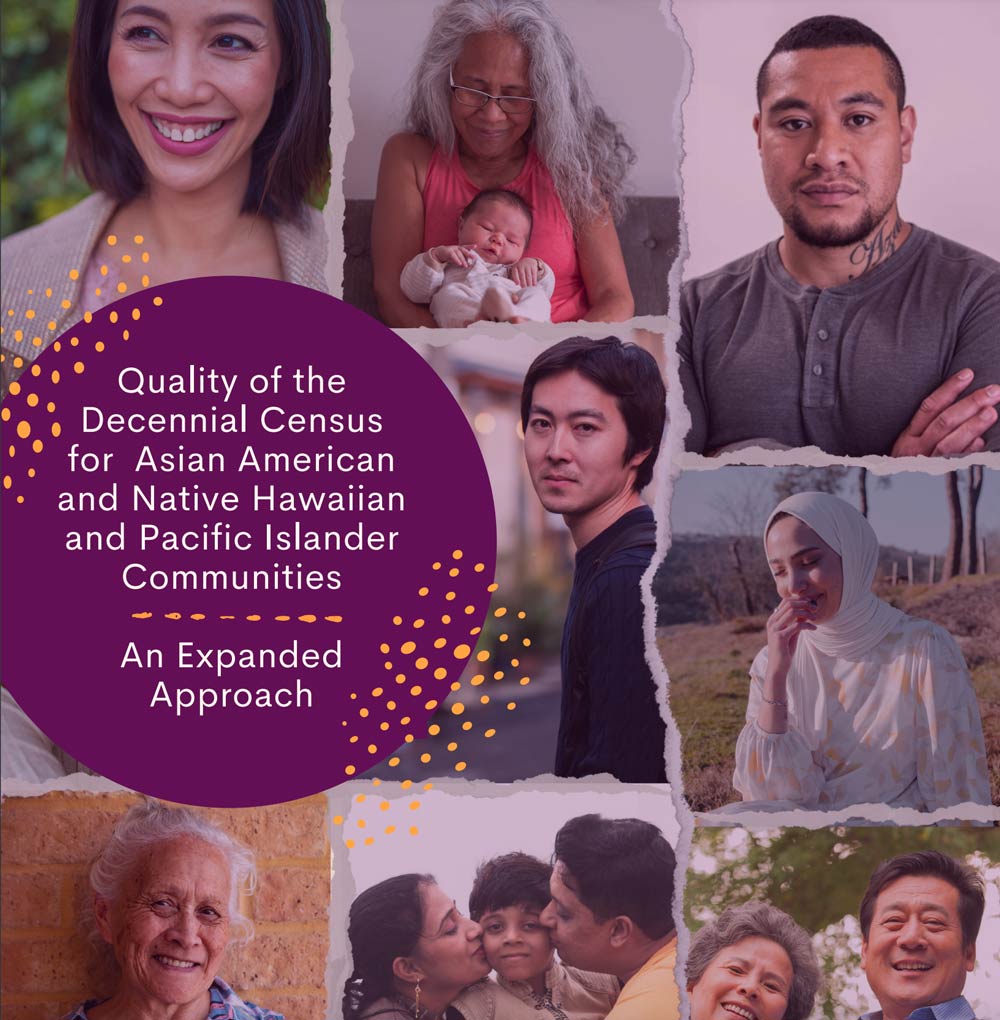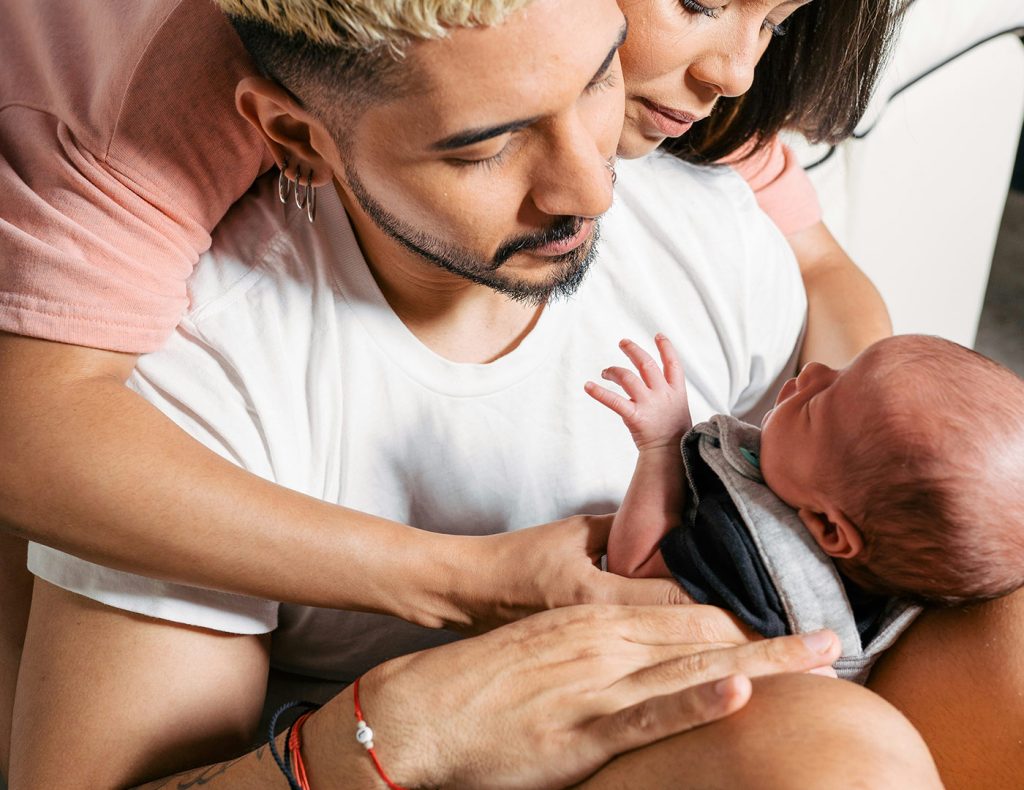By Christopher Dick, Founder, Demographic Analytics Advisors and Terry Ao Minnis, Vice President of Census and Voting, Asian Americans Advancing Justice | AAJC
This blog is cross-published by Advancing Justice | AAJC. You can access the blog here.
The undercount of young children is a well-known and historical issue in decennial censuses – both in the United States as well as in other countries. However, far less is known about the potential undercount of young children for different race groups – including Asian Americans and Native Hawaiians, and Pacific Islanders (NHPIs).
Until a recent report developed by our teams at Advancing Justice – AAJC and Demographic Analytics Advisors, no study had shown if the trends shown in the total population, the black population, and the Latino population (of an undercount of their young children population) similarly applied to Asian Americans and NHPIs. Our research found that there are undercounts, at the national level, for the Asian American population aged 0-4. However, for the NHPI population aged 0-4, we did not find undercounts. Our analysis breaks further ground by looking below the national level at state and county trends. Unsurprisingly, much like we see with the total population, the population aged 0-4 is undercounted in some areas and overcounted in others. This is even the case for young NHPI children who do not see an undercount at the national level, but do show undercounts in many counties.
The findings underline the importance of continued research on where these undercounts occur, even for groups that see overcounts at the national level, and targeted plans to counter this undercount in 2030 and beyond. As the Count All Kids campaign noted, “[w]hen we miss young children in the census, it has serious consequences for them, their families, their communities and our nation – with many of those consequences lasting for at least 10 years… The census data is used to allocate one and a half trillion dollars every year, by formula. Put in human terms, lost dollars mean overcrowded classrooms, underfunded services, hungrier children, inadequate health care — big problems for most communities, and particularly for our poor and near-poor children. Our kids lose when vital community resources dwindle. These resources are critical to the success of all children. Counting children helps them thrive.
If we get it wrong… today’s preschoolers will lose needed resources for a decade–the majority of their childhood.”
How We Got Here
Traditional measures of census quality, Demographic Analysis (DA), and Post-Enumerations Surveys (PES) do not allow for insight into the potential undercount of young children below the national level or for the Asian American and NHPI communities. In our report, we uncover potential Asian American and NHPI undercounts by utilizing a methodology that compares postcensal population estimates—the official population number for the United States in every year that does not have a decennial census—to decennial census data. We call this approach Population Estimates Analysis (PA). This allows us to identify the geographic distribution of potential overcounts and undercounts for young children in the Asian American and NHPI communities, illustrated by the figure below. In so doing, we build upon traditional measures of census quality. Much greater detail on the methodology used is available in the full report.

What We Found
Below we can see some of the trends for both the Asian American and NHPI communities from the 2010 Census for the undercount of young children (the data required for these analyses for 2020 are not yet available).

At the national level, the Asian American Alone population aged 0-4 is undercounted while the Asian American Alone or in Combination population is not.
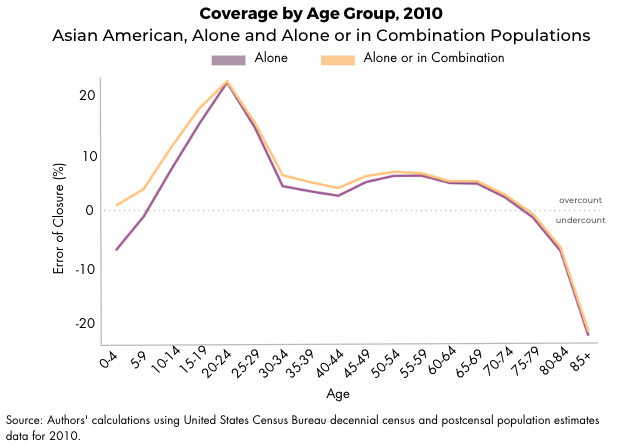
For the NHPI population, the aged 0-4 population is overcounted for both the Alone and the Alone or in Combination population.
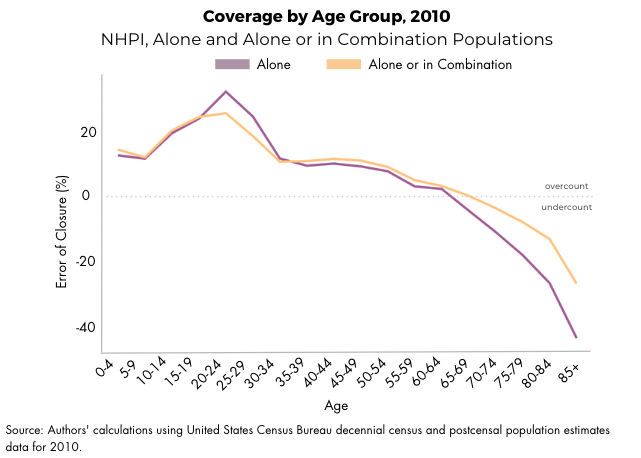
But these national trends mask significant subnational variation. The figure below shows us that, at the state level, for the Asian Alone or in Combination population aged 0-4, over 20 states have an undercount, even though at the national level this group has an overcount in the 2010 Census.
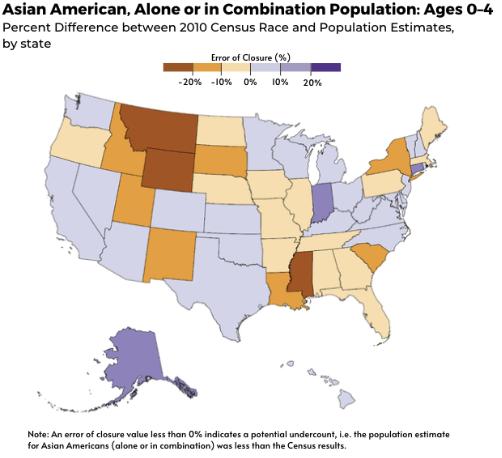
A similar pattern plays out for the NHPI population, even though the overcount for those aged 0-4 is even larger at the national-level. There are 19 states with an undercount for NHPI children aged 0-4, even with this overcount at the national-level.
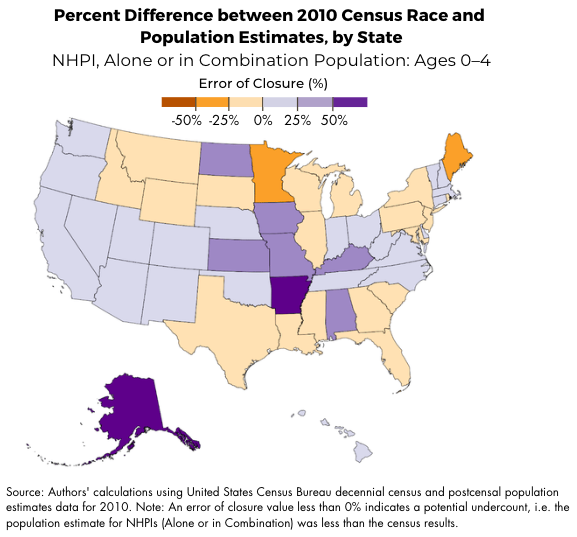
We can break this analysis down even further, by looking at county-level patterns. Below we see that even though the aged 0-4 Asian Alone or in Combination population in the 2010 Census is overcounted at the national-level, in 67% of counties this population was actually undercounted. For the aged 0-4 NHPI Alone or in Combination population, with an even larger overcount at the national-level, there were 41% of counties where this population was actually undercounted.

In the chart below, we can see that this was even the case in some of the largest counties in the country. In Los Angeles County, California, the undercount of young children in the 2010 Census is estimated to be nearly 5% for the Asian Alone or in Combination population versus a slight overcount at the national level.

Our Path Forward
These findings underscore the importance of a more nuanced understanding of the undercount of young children. While we know that undercounts exist at the national-level and by some race and ethnicity groups, better understanding by race / ethnicity and geography are important to develop approaches that can effectively address these undercounts. Understanding not only who is more likely to be undercounted, but also in what types of places can lead to better targeted and innovative approaches to ensuring a better count.
As additional 2020 Census data products are released, we will be assessing whether these trends continued for Asian American and NHPI young children. At the same time, we will be pursuing the recommendations laid out in our report, including those related to researching and planning for assessing the undercount. In particular, we will urge research into how Asian Americans and NHPIs can be incorporated into DA, development of a more robust plan for the PES in 2030 (which will allow for subnational undercounts by race and ethnicity), and the creation of a larger set of potential census quality measures. In all instances, we will continue to call for meaningful engagement of interested public stakeholders, particularly those from communities historically missed in the census. Working towards accurate counts of our young children is critical to ensuring the future of our nation continues to prosper.

